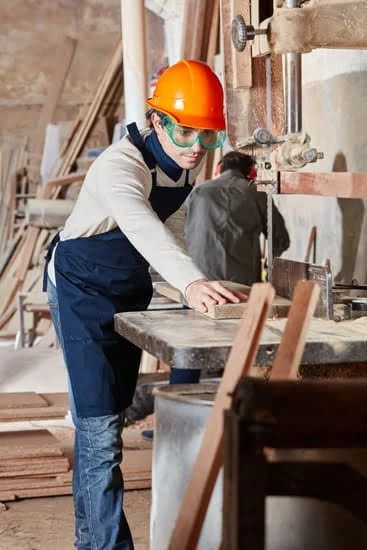Introduction
A drill press (sometimes referred to as a pillar drill) is a versatile power tool that can be used for many different woodworking projects. As the name implies, a drill press is used to drill precise holes into materials such as wood, metal and plastic – perfect for making precise mortises and tenons in furniture construction or cabinetry work. It can also be used for drilling dowel joints, hinges, fasteners, dowel pin holes and more. In addition to precise drilling, a drill press can also be used for tapping threads and countersinking screws. With the correct accessories, you can use your drill press for sanding, routing (using a plunge router), polishing and honing sharp edges.
The horsepower of the motor on your drill press will affect the speed of the spindle, amount of torque available and the weight capacity of materials that may be drilled or routed. Generally speaking, an entry-level 1/4 horsepower bench-top drill press should suffice for most hobbyists’ needs. If you will be working with large chunks of stock regularly or using heavier tools then opt for something slightly larger such as a 1/2 or 3/4 horsepower machine. Professional cabinet shops would require a machine with at least one horsepower or greater to accommodate their workloads and materials.
What is the Amount of HP For Woodworking Drill Presses?
A drill press is a tool used for creating precise, round holes when working with wood. A motor powers the drill bit, and the size of the motor is determined by the amount of horsepower (HP) it can generate. There are three types of motors commonly used in drill presses: universal motors, induction motors, and brushless DC motors.
Universal motors provide high power outputs while operating on both AC/DC voltages. They are very fast in speed, small in size and lightweight, making them ideal for smaller projects with limited space requirements. However, they are limited to lower load capacities and have a tendency to overheat when subjected to heavy loads or extended periods of operation.
Induction motors have slightly more power than universal motors and operate on a single voltage input only but from both AC/DC sources, making factor setups easier than universal models. They also offer excellent torque capabilities as well as efficient cooling systems that dissipate heat quickly and evenly from surrounding components throughout extended periods of use. This makes these models ideally suited for high-power applications requiring reliable precision drilling operations over long periods of time without overheating or breakdowns.
Finally, brushless DC motors have slightly less power than induction motors but build up torque quickly at low speeds providing precise control in positioning operations that require precise depth stop settings such as doweling projects like cabinet construction. These models provide good efficiency ratings while their built-in digital drives deliver precise power data signal updates which improves operator safety during additional drilling tasks while working away from the pull cord controls attached to these DC machines.
Therefore , it is important to match the correct motor to the project; each type (universal, induction or brushless DC motor) provides different levels of power output suitable for various applications/projects based on your desired outcome and budgeting availability. Ultimately, depending on your project requirements, choose one that is able to handle a minimum 3 horsepower rating or higher if needed for heavier-duty applications.
Factors to Consider When Choosing a Drill Press
When selecting a drill press for woodworking projects, it is important to consider compatible accessories that can be used with the machine. Accessories such as bits, chucks and jigs are necessary for executing intricate woodworking tasks. Bits are tools that are used for drilling holes into various materials. Many different types of bits are available, including spade bits, countersink bits, and brad-point bits – all of which provide specialized performance when working with various kinds of material.
Chucks are designed to hold drill bits in place and provide stable operation during usage. With solid construction and durable safety mechanisms ensuring that the bit is securely held in its position, there’s no risk of slipping or wobbling as users perform intricate drilling procedures. And lastly, jigs allow for specialized operations that require precise measurements and workpiece location adjustments. This can include drilling multiple identical holes directly into a workpiece without any errors. All of these components play an important role in woodworking operations; without them the overall quality of results can be drastically affected.
Features for Improved Performance
When selecting a woodworking drill press, accuracy is of utmost importance. Most drill presses available on the market today have features specifically designed to improve accuracy such as adjustable depth stops and speed control settings.
Adjustable depth stops allow you to pre-set drilling depths in every piece you work with, allowing for consistent results time after time. Speed control settings allow you to adjust the speed of the drill press, depending on the material being cut or drilled. This is especially important when working with materials such as plywood that require slower speeds for proper cutting performance. Also ensure that your drill press has precision height adjustments that can be made without tools, so you can quickly and easily make fine adjustments when needed. Finally, a calibrated table can help reduce inaccuracies from side pressure by balancing the weight of the screw evenly across the entire surface.
Safety When Using a Woodworking Drill Press
When using a woodworking drill press, it is important to take precautions in order to maintain your safety. Make sure to wear proper protective eyewear and clothing when using the machine. It is also important to handle the tool with care; make sure that you are aware of where your fingers are at all times in order to avoid any potential accidents. Additionally, it is best practice to unplug the machine between uses, as this will help reduce the risk of potential electric shock. Make sure to keep loose clothing, tools, jewelry and your hair away from any moving parts on the drill press during use. Lastly, if you ever encounter home or blade problems, be sure to stop functioning immediately before contacting a repair service professional or looking up tutorials online. Following these safety protocols can ensure that no one is injured while operating a woodworking drill press.
Conclusion
When using a woodworking drill press, it is important to keep its HP rating in mind. Higher horsepower is usually desirable for more heavy-duty jobs, like drilling large holes or through dense hardwoods. But for smaller projects and lighter products, too much horsepower can cause damage to the wood, so lower power ratings are recommended. To ensure that your drill press is operating at its peak performance, make sure to regularly inspect the power switch, cord connections, and other parts of the drill press for any damage or wear and tear. If there is something wrong with any of these components be sure to replace them immediately. Also make sure to read the manufacturer’s manual for maintenance procedures and safety guidelines specific to your drill press model. Finally, consider using lubricants on metal parts of the machine periodically in order to prolong their life span. Taking proper care of your drill press will not only help maintain its efficiency but also prevent you from having costly replacements in the future.

Hi everyone! I’m a woodworker and blogger, and this is my woodworking blog. In my blog, I share tips and tricks for woodworkers of all skill levels, as well as project ideas that you can try yourself.





